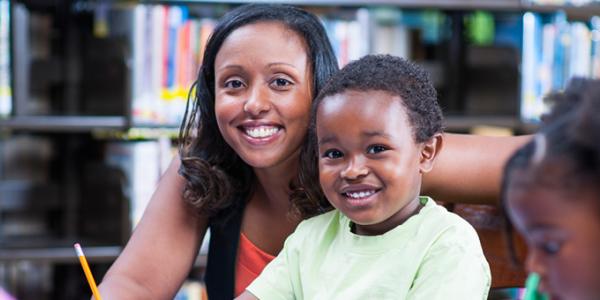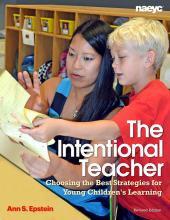Excerpt from The Intentional Teacher: Choosing the Best Strategies for Young Children’s Learning, Revised Edition

Science
Communicating Ideas
Communicating their scientific discoveries encourages children to use if/then language and to think in terms of cause and effect. The very act of talking makes them more observant. Symbolic communication (such as drawing, writing, demonstrating, building, and role playing) helps preschoolers document their observations, find patterns, and recognize relationships (Chalufour & Worth 2004). When adults and peers show interest in these various forms of scientific communications, it affirms to children that what interests them is worth paying attention to.
Teaching Strategies. Provide a variety of opportunities for children to share their scientific discoveries. Try the following ideas to encourage verbal and symbolic expression about science learning:
-
Use scientific language to talk with children about their actions, observations, and discoveries. Listen to what children say, especially their “how” and “why” questions, and answer them patiently. Share your own observations and introduce new vocabulary words (“I scraped frost off my windshield this morning”). Use new words repeatedly and in context to help children understand and eventually use these terms themselves.
-
Provide opportunities for children to symbolically represent their scientific experiences. Nonverbal representations are especially valuable for children who are dual language learners. Here are some examples:
- Artwork. Provide drawing and modeling materials and ask children to describe elements of their art-making processes (for example, the materials they used, what they did with them, what happened as a result). Their descriptions will provide a window into their scientific thinking (for example, about how houses are built or where animals live).
- Pretend play. Children show their understanding of how things work during role play. Provide time, props, and prop-making tools, and play as a partner in their scenarios. For example, while pretending to bake a cake with a child in the house area, a teacher asked for something to stir with. The child handed her an electric mixer (with the cord removed) and said, “You can’t really plug it in. You have to pretend it works.” To extend the child’s idea, the teacher replied, “You need a cord so electricity can run the motor that turns the beaters.”
- Writing. Writing tools such as clipboards and markers encourage children to record their ideas during playtime as well as on field trips. Reading books written for preschoolers about science and scientists will also inspire children to communicate their own ideas by “writing” them down.
- Lists, charts, and graphs. Young children can apply their emerging ability to work with data to share the results of their scientific investigations. Ask reflective questions to help them document and interpret their findings, such as “How should we label the columns?” and “Why do you suppose there are more in this column than the other column?”
From The Intentional Teacher: Choosing the Best Strategies for Children’s Learning, Revised Edition, by A.S. Epstein. Copyright © 2014 by the National Association for the Education of Young Children.
Learn more about this book
Resources
Recommendations
For Authors & Photographers
Catalog
Webinars
NAEYC Books List
